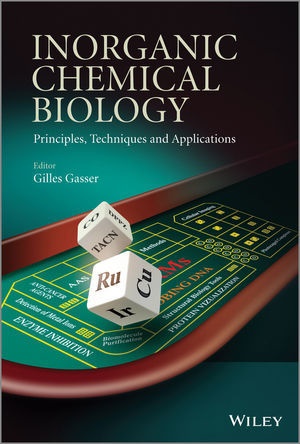En savoir plus
Understanding, identifying and influencing the biological systems are the primary objectives of chemical biology.
Table des matières
About the Editor xiii
List of Contributors xv
Preface xix
Acknowledgements xxi
1. New Applications of Immobilized Metal Ion Affinity Chromatography in Chemical Biology 1
Rachel Codd, Jiesi Gu, Najwa Ejje and Tulip Lifa
1.1 Introduction 1
1.2 Principles and Traditional Use 2
1.3 A Brief History 4
1.4 New Application 1: Non-protein Based Low Molecular Weight Compounds 5
1.4.1 Siderophores 6
1.4.2 Anticancer Agent: Trichostatin A 10
1.4.3 Anticancer Agent: Bleomycin 12
1.4.4 Anti-infective Agents 13
1.4.5 Other Agents 14
1.4.6 Selecting a Viable Target 15
1.5 New Application 2: Multi-dimensional Immobilized Metal Ion Affinity Chromatography 17
1.6 New Application 3: Metabolomics 20
1.7 New Application 4: Coordinate-bond Dependent Solid-phase Organic Synthesis 20
1.8 Green Chemistry Technology 21
1.9 Conclusion 23
Acknowledgments 24
References 24
2. Metal Complexes as Tools for Structural Biology 37
Michael D. Lee, Bim Graham and James D. Swarbrick
2.1 Structural Biological Studies and the Major Techniques Employed 37
2.2 What do Metal Complexes have to Offer the Field of Structural Biology? 38
2.3 Metal Complexes for Phasing in X-ray Crystallography 39
2.4 Metal Complexes for Derivation of Structural Restraints via Paramagnetic NMR Spectroscopy 41
2.4.1 Paramagnetic Relaxation Enhancement (PRE) 42
2.4.2 Residual Dipolar Coupling (RDC) 43
2.4.3 Pseudo-Contact Shifts (PCS) 43
2.4.4 Strategies for Introducing Lanthanide Ions into Bio-Macromolecules 44
2.5 Metal Complexes as Spin Labels for Distance Measurements via EPR Spectroscopy 53
2.6 Metal Complexes as Donors for Distance Measurements via Luminescence Resonance Energy Transfer (LRET) 54
2.7 Concluding Statements and Future Outlook 56
References 56
3. AAS, XRF, and MS Methods in Chemical Biology of Metal Complexes 63
Ingo Ott, Christophe Biot and Christian Hartinger
3.1 Introduction 63
3.2 Atomic Absorption Spectroscopy (AAS) 64
3.2.1 Fundamentals and Basic Principles of AAS 64
3.2.2 Instrumental and Technical Aspects of AAS 65
3.2.3 Method Development and Aspects of Practical Application 67
3.2.4 Selected Application Examples 69
3.3 Total Reflection X-Ray Fluorescence Spectroscopy (TXRF) 72
3.3.1 Fundamentals and Basic Principles of TXRF 72
3.3.2 Instrumental/Methodical Aspects of TXRF and Applications 73
3.4 Subcellular X-ray Fluorescence Imaging of a Ruthenium Analogue of the Malaria Drug Candidate Ferroquine Using Synchrotron Radiation 74
3.4.1 Application of X-ray Fluorescence in Drug Development Using Ferroquine as an Example 75
3.5 Mass Spectrometric Methods in Inorganic Chemical Biology 80
3.5.1 Mass Spectrometry and Inorganic Chemical Biology: Selected Applications 83
3.6 Conclusions 90
Acknowledgements 90
References 90
4. Metal Complexes for Cell and Organism Imaging 99
Kenneth Yin Zhang and Kenneth Kam-Wing Lo
4.1 Introduction 99
4.2 Photophysical Properties 100
4.2.1 Fluorescence and Phosphorescence 100
4.2.2 Two-photon Absorption 101
4.2.3 Upconversion Luminescence 102
4.3 Detection of Luminescent Metal Complexes in an Intracellular Environment 104
4.3.1 Confocal Laser-scanning Microscopy 104
4.3.2 Fluorescence Lifetime Imaging Microscopy 105
4.3.3 Flow Cytometry 106
A propos de l'auteur
EditorGilles Gasser, Department of Chemistry, University of Zurich, Switzerland
Résumé
Understanding, identifying and influencing the biological systems are the primary objectives of chemical biology.

